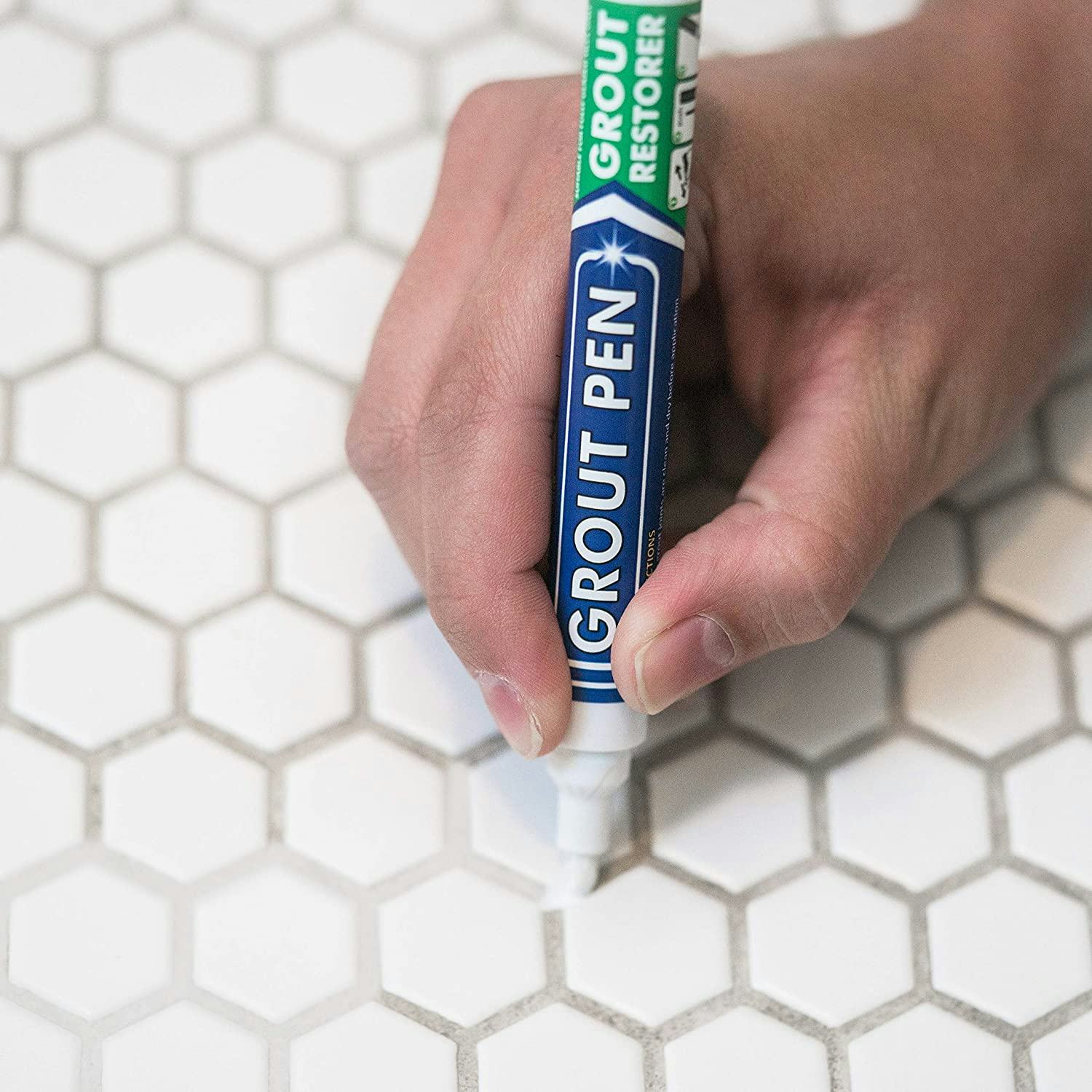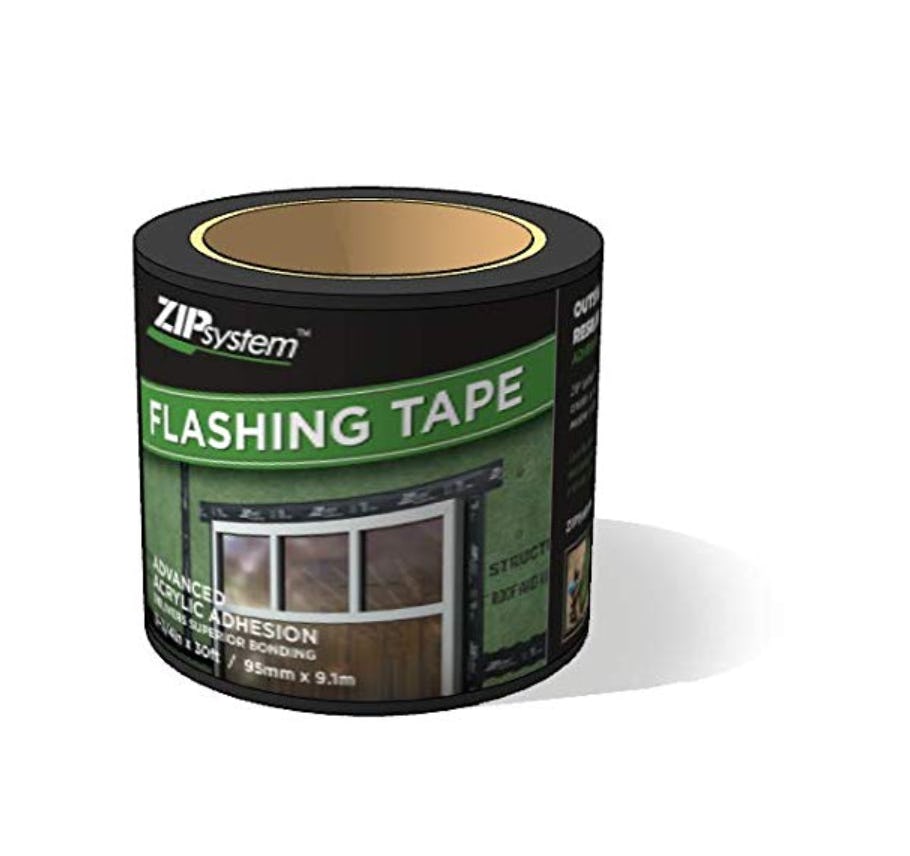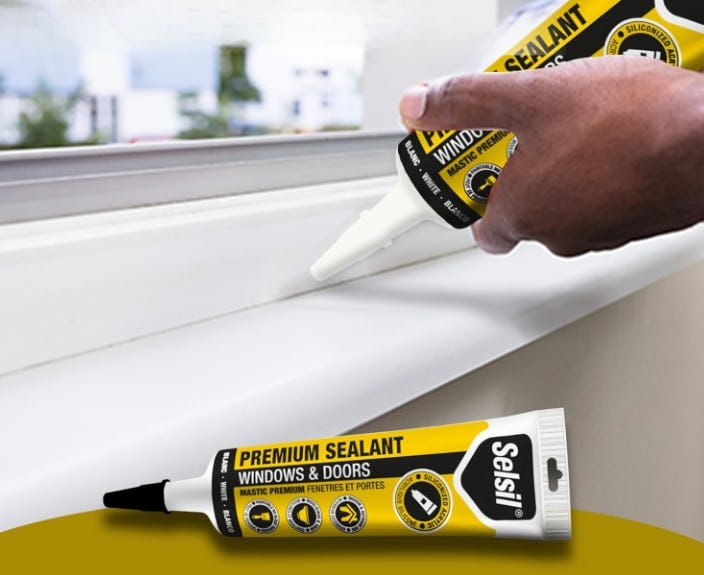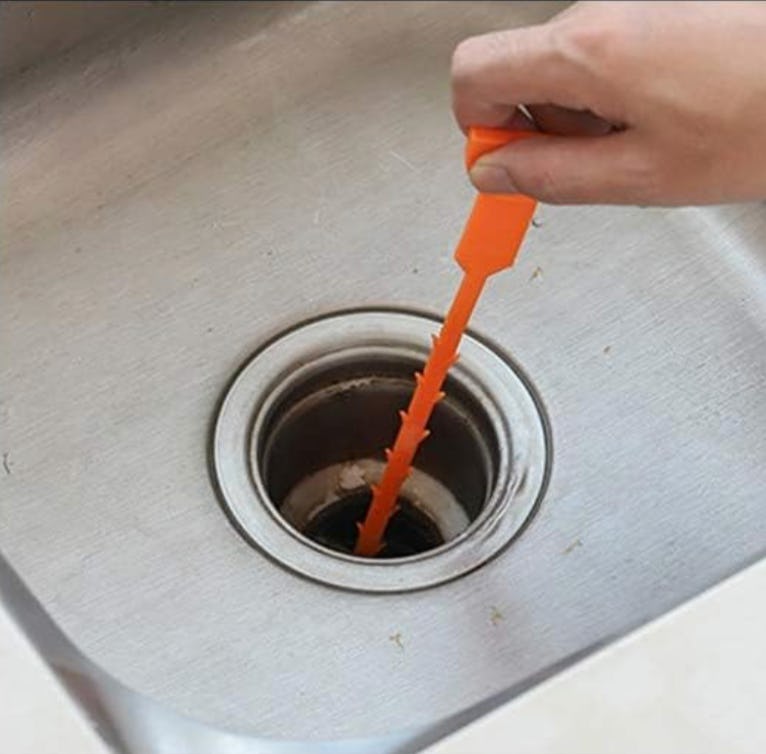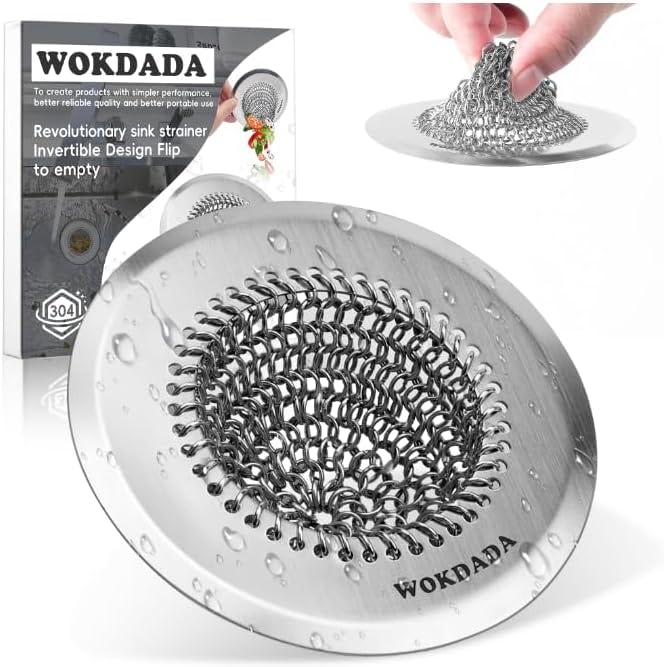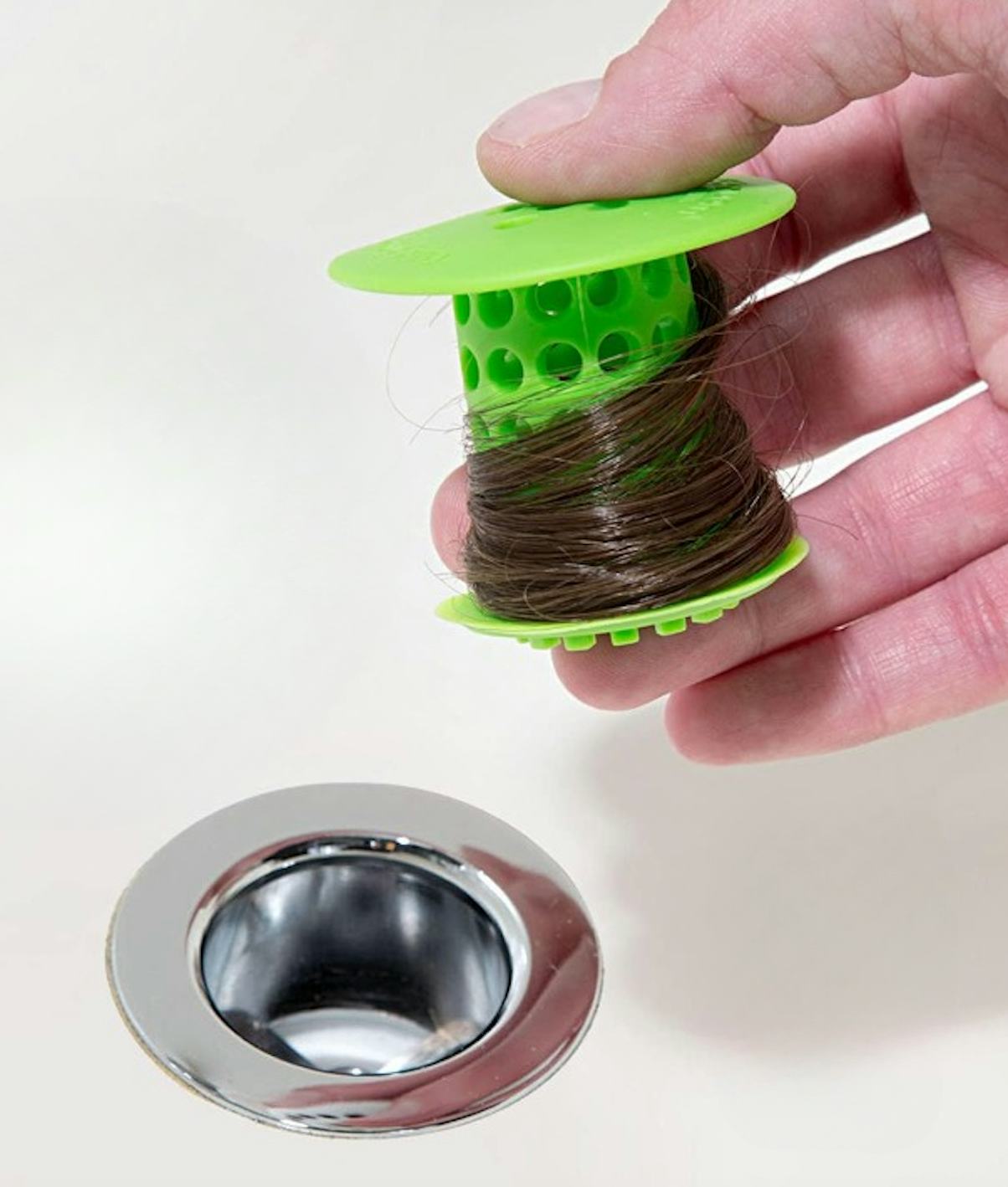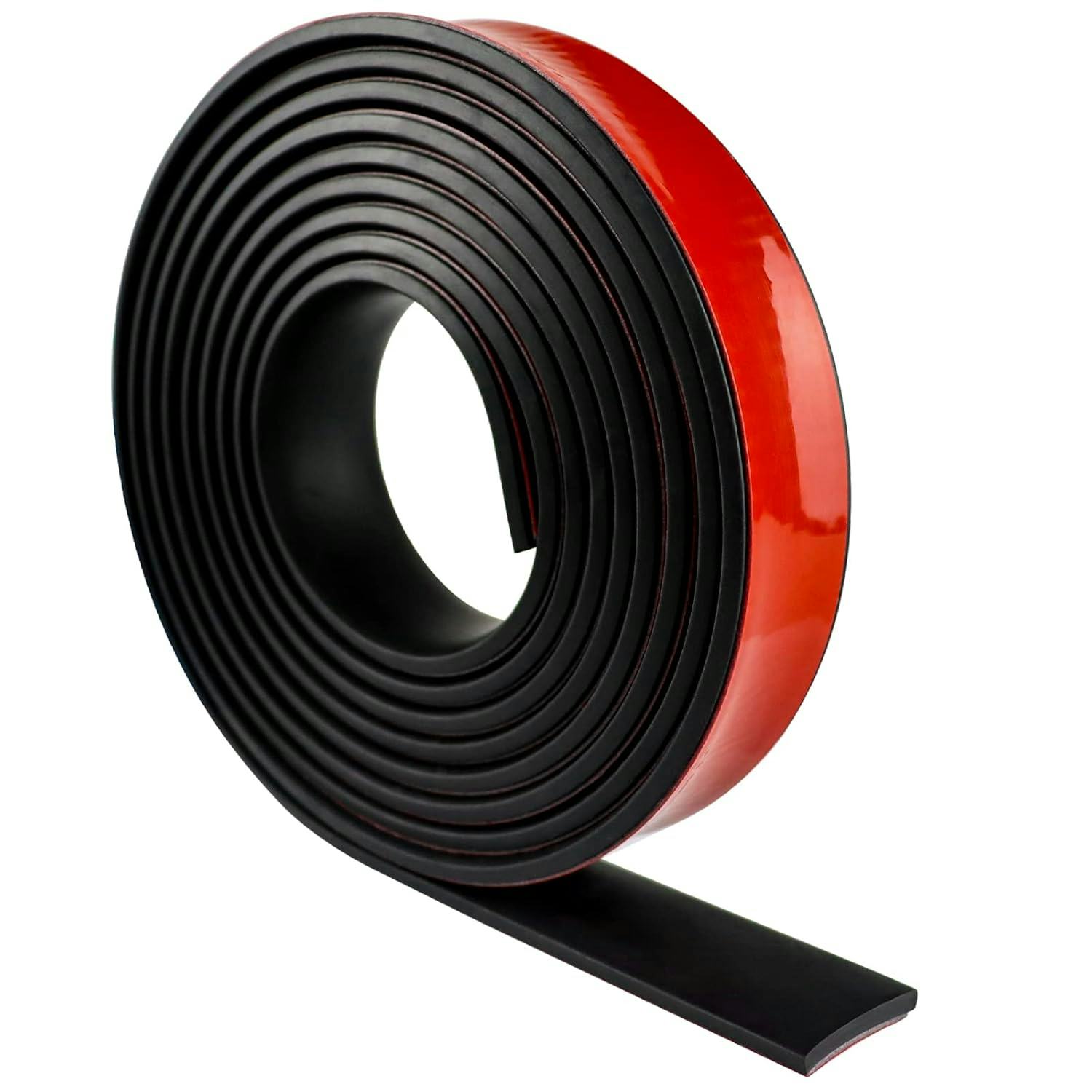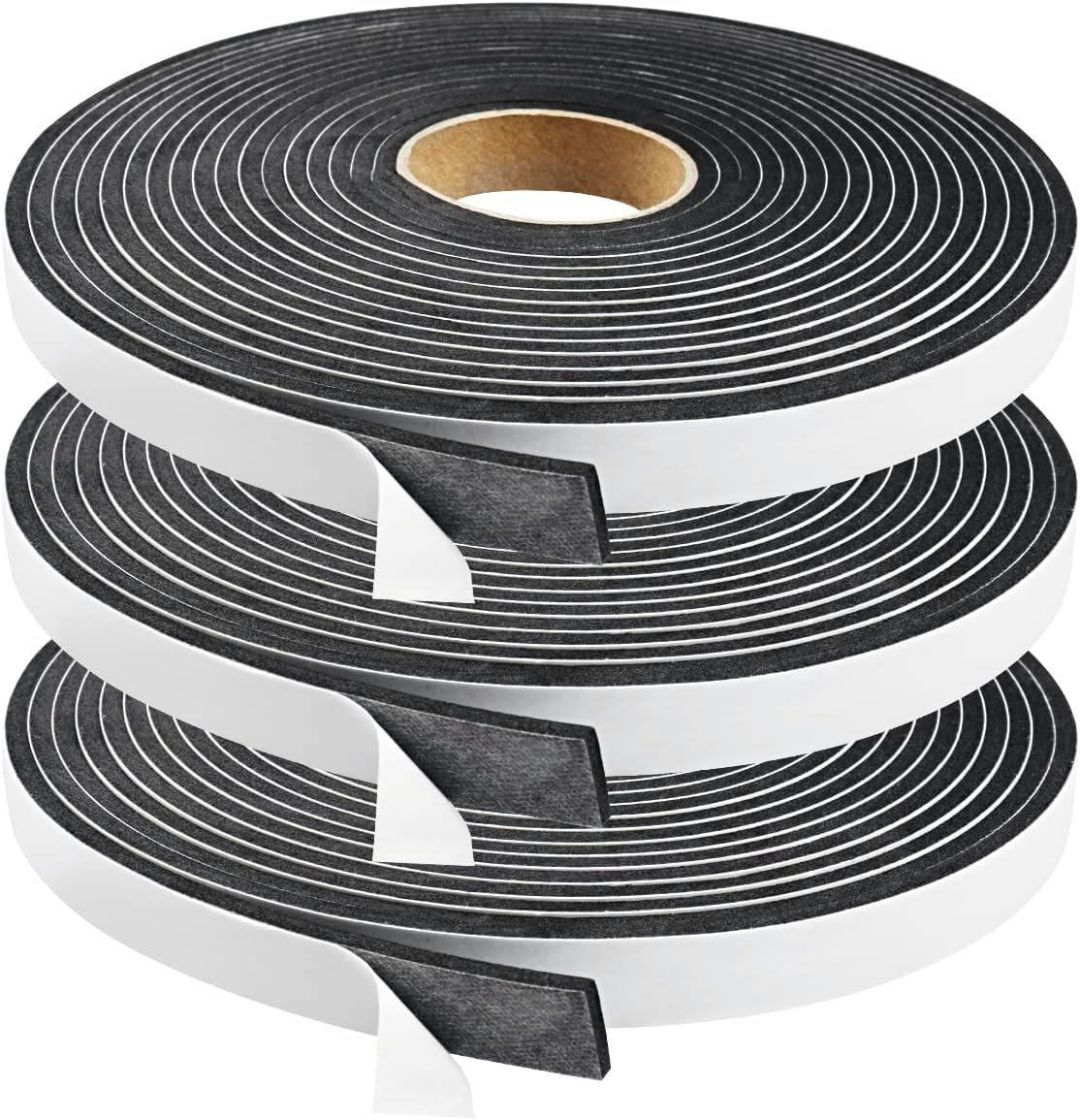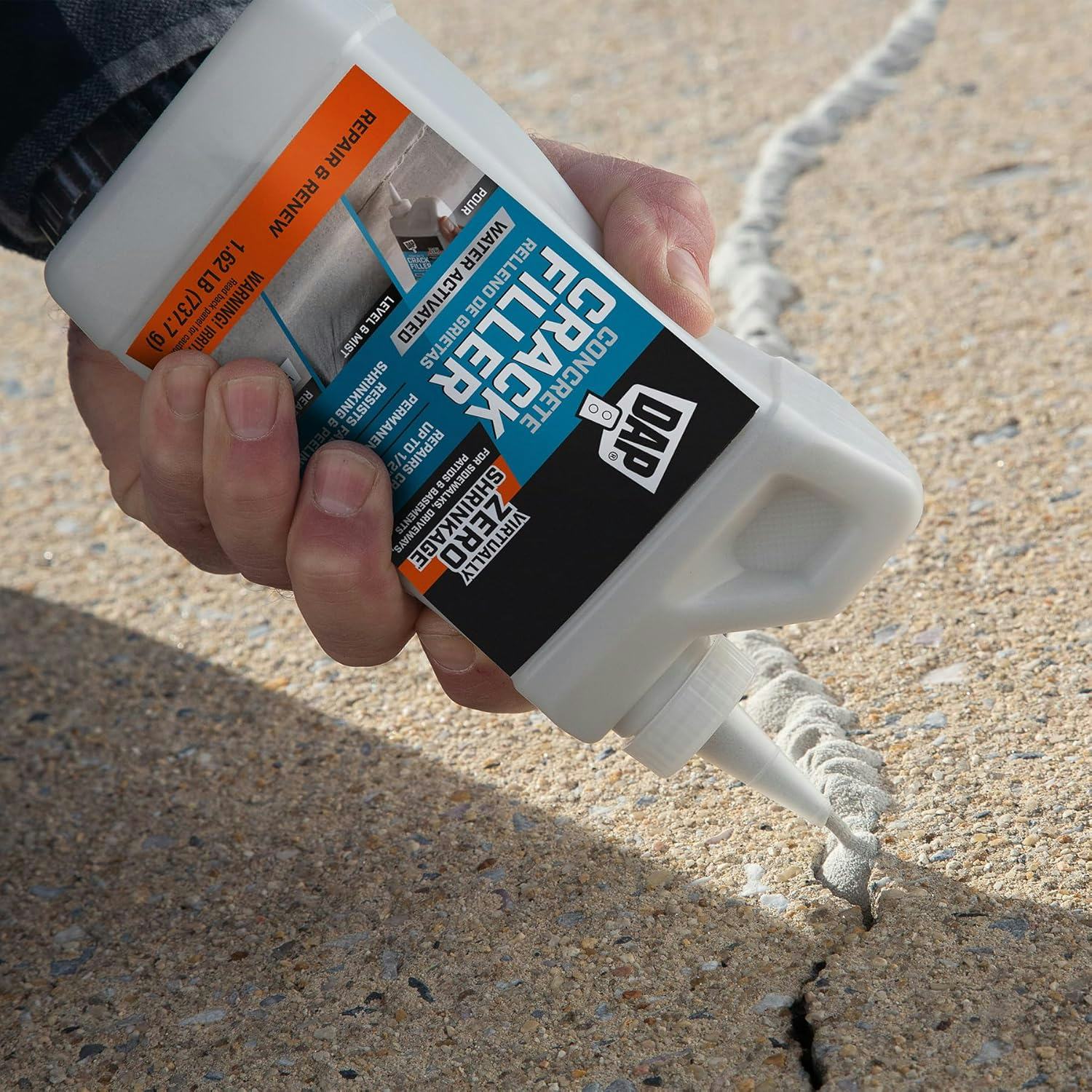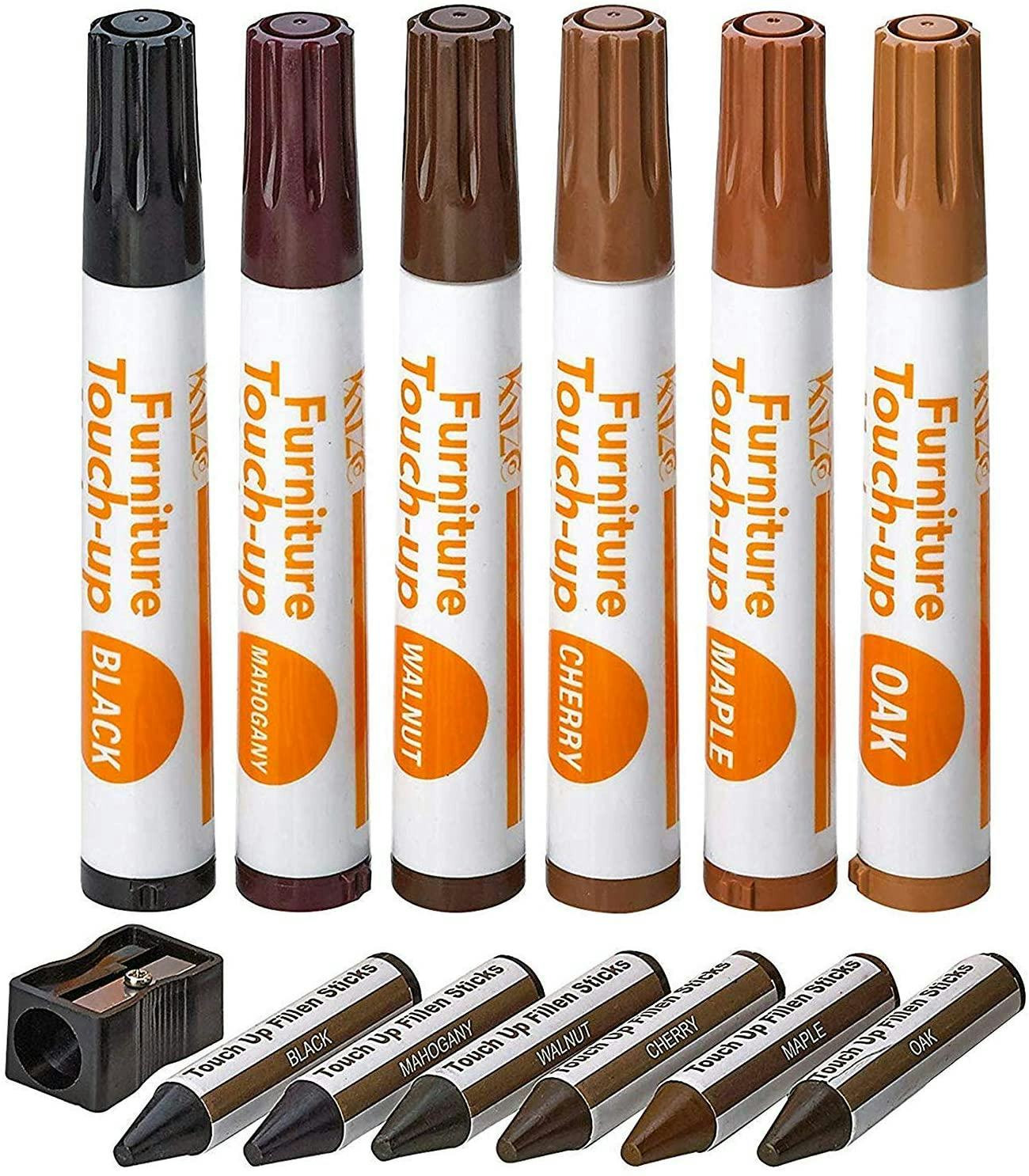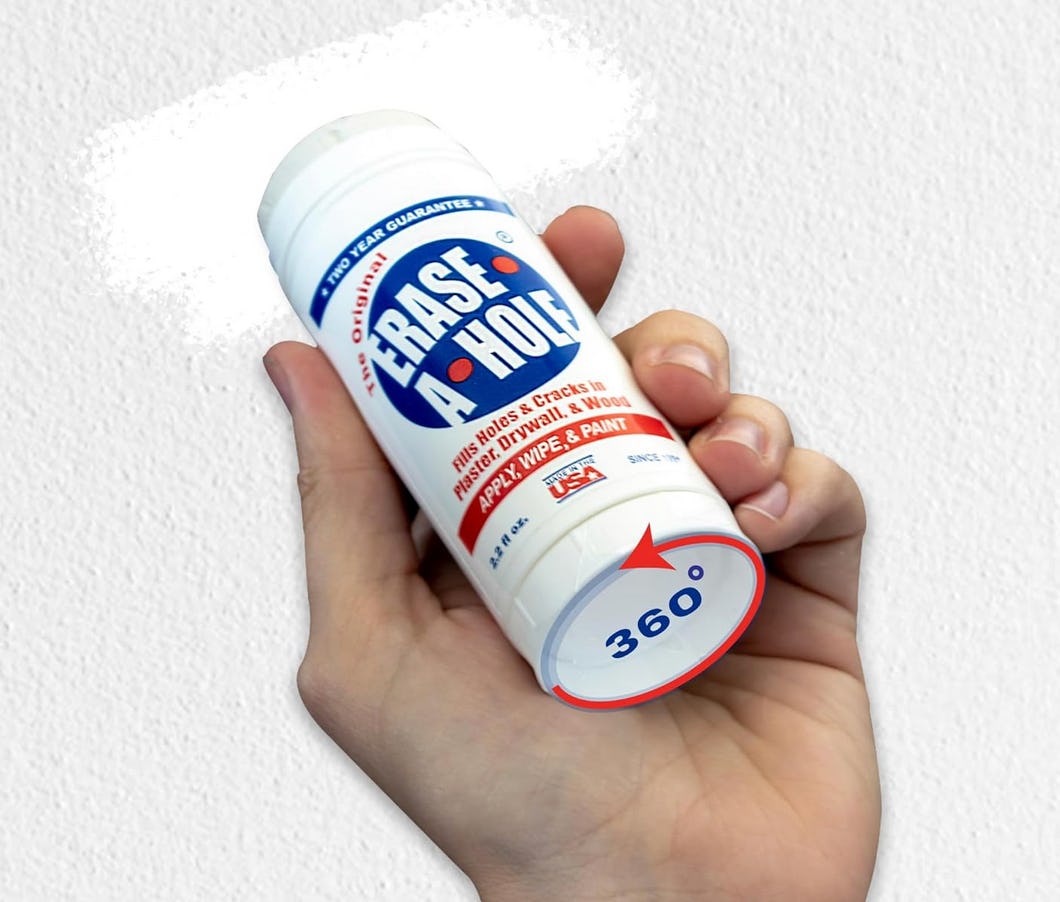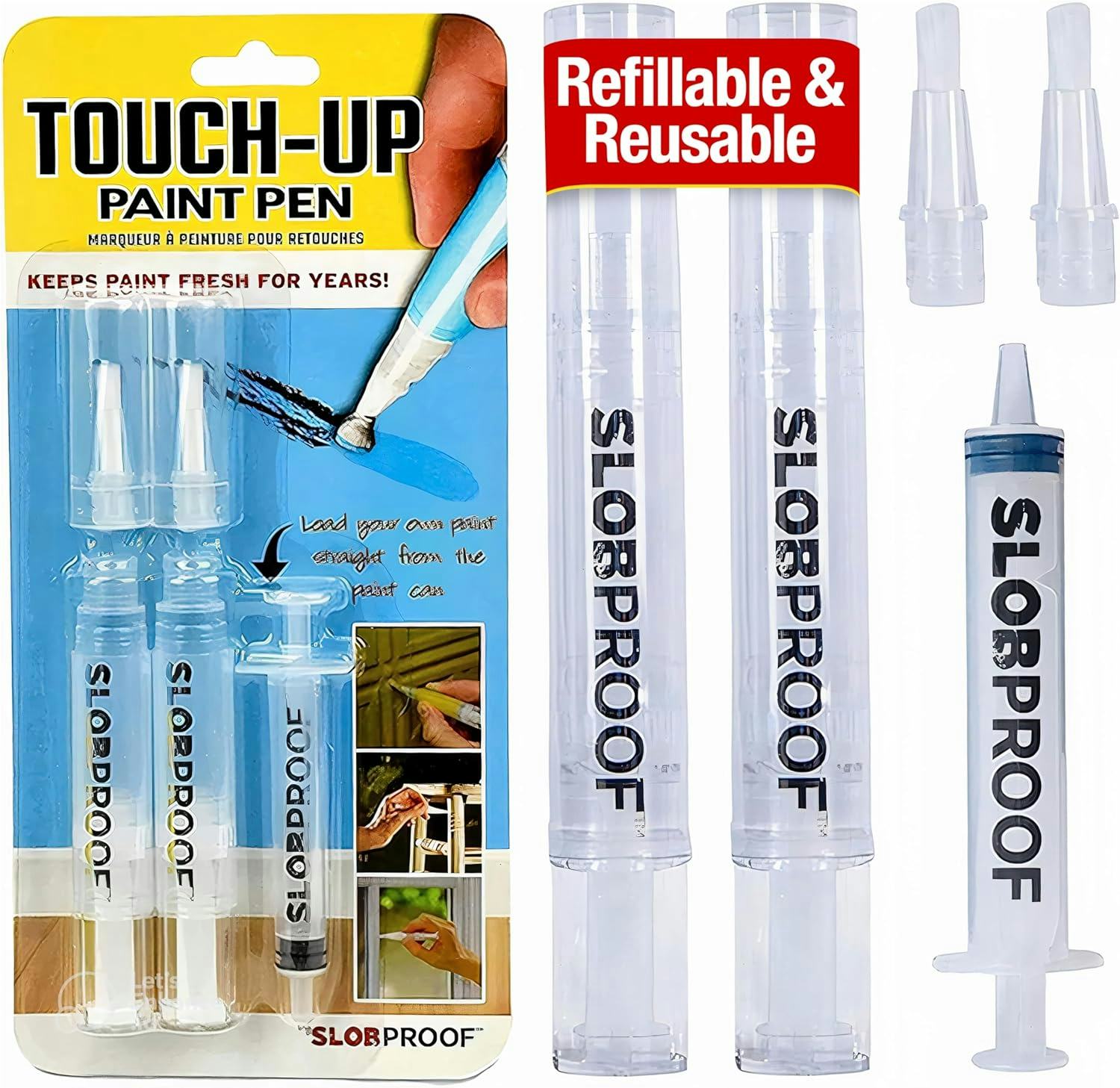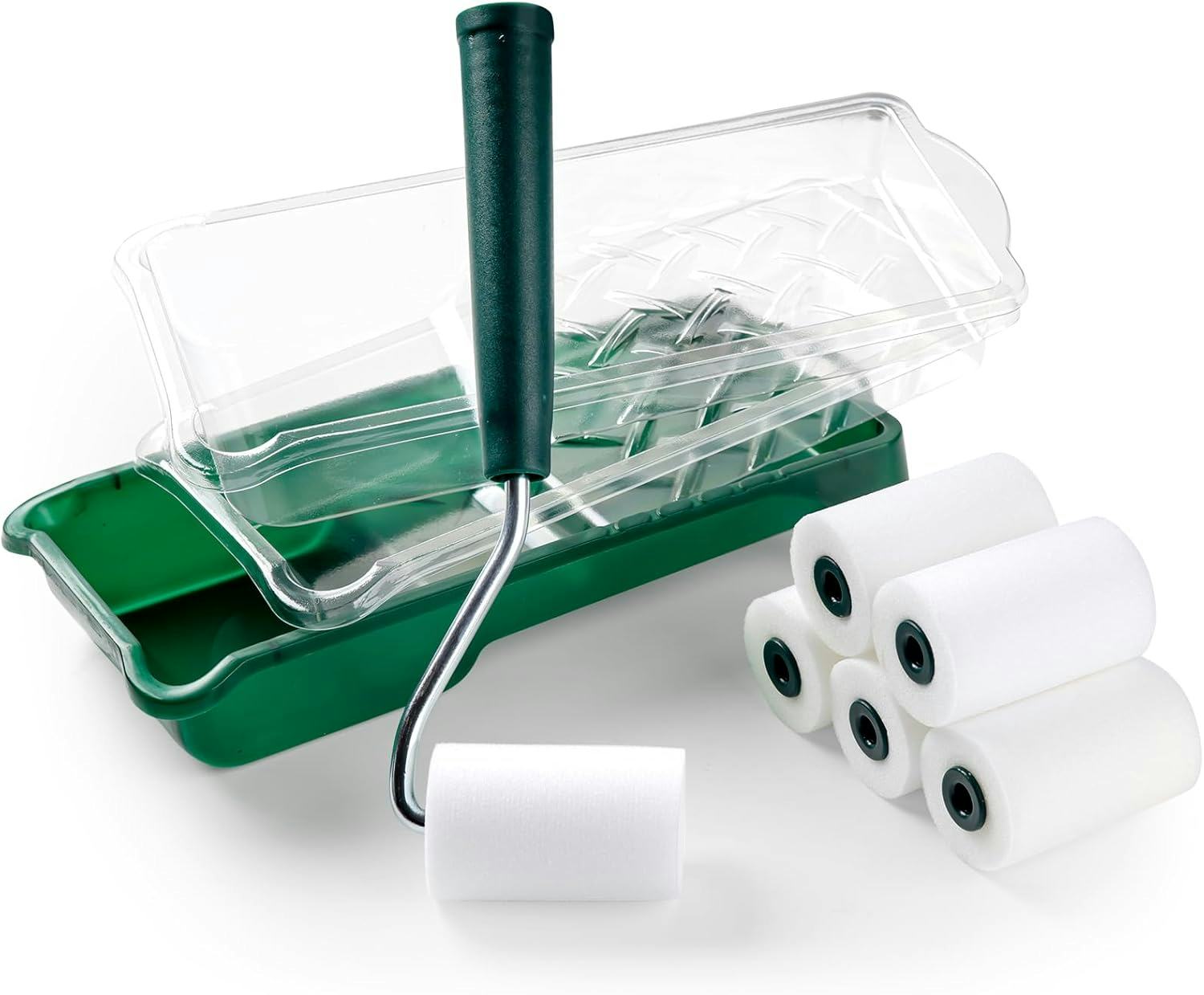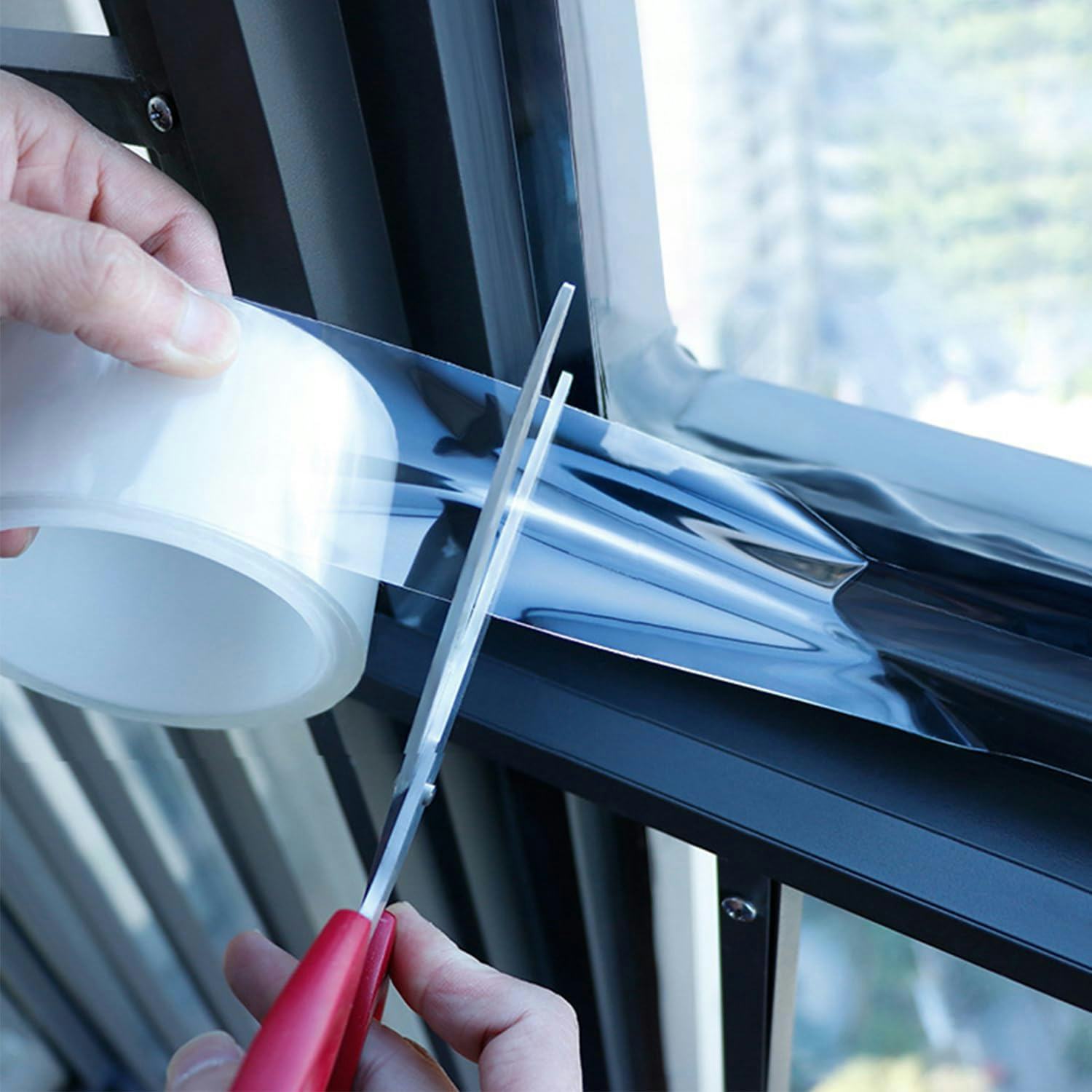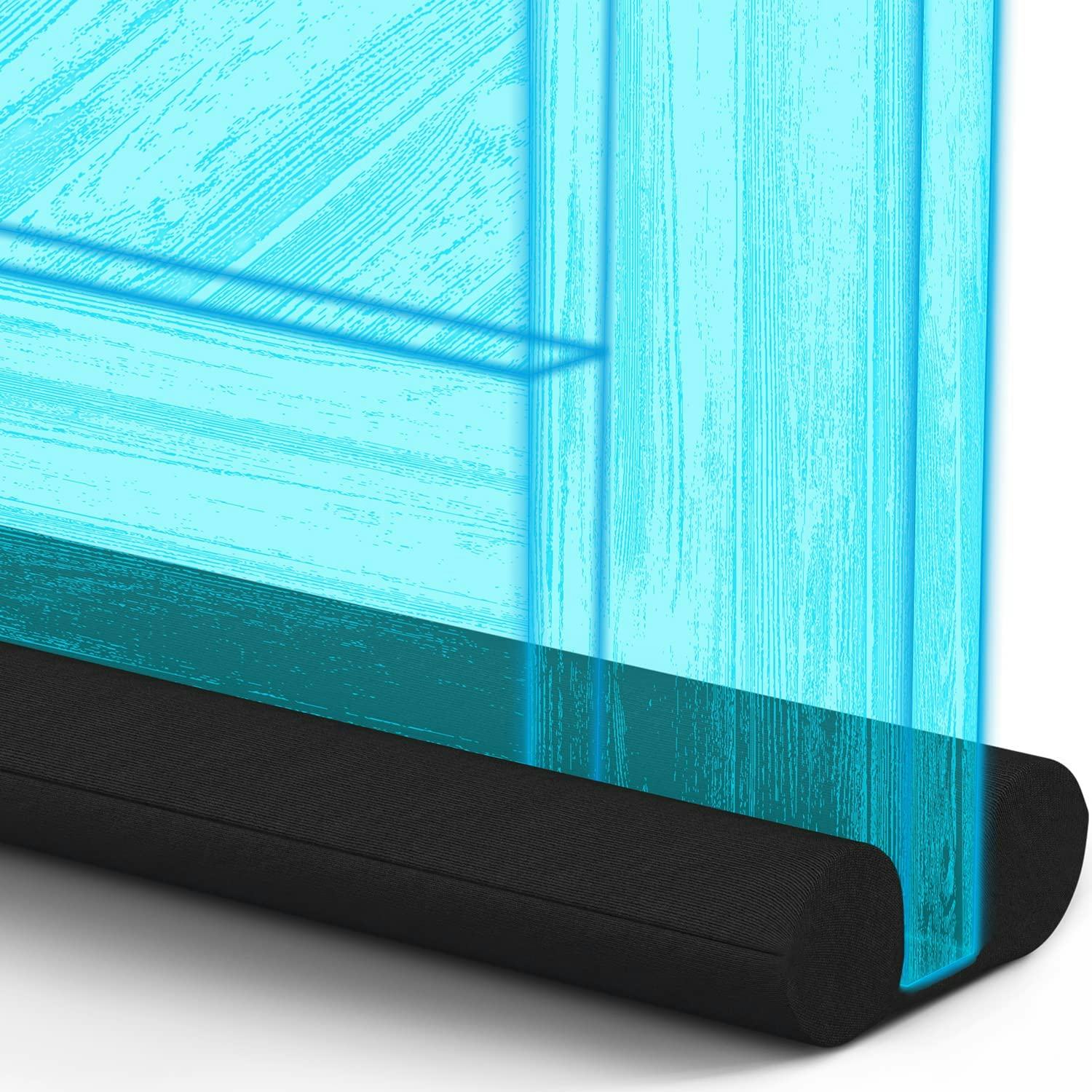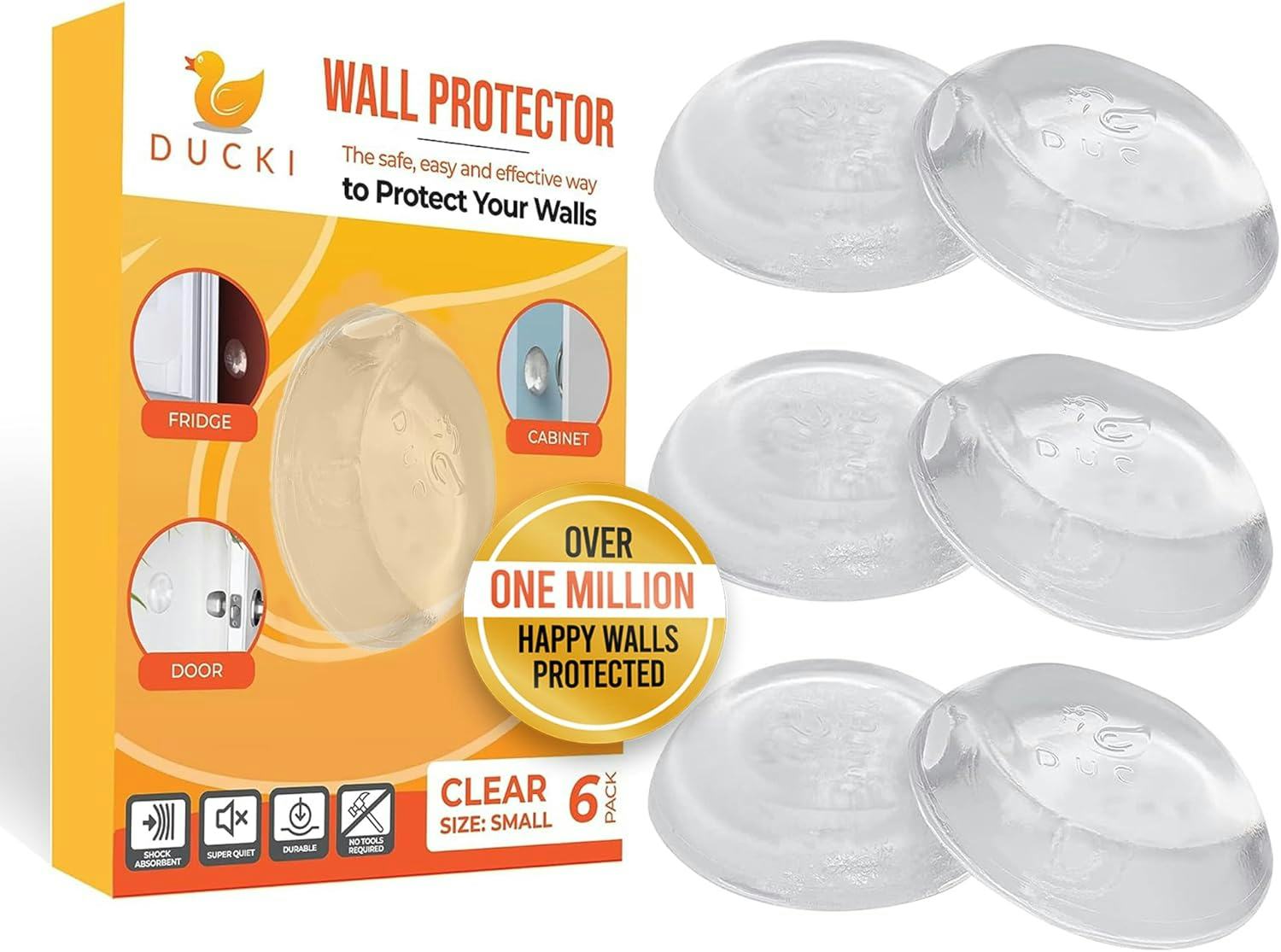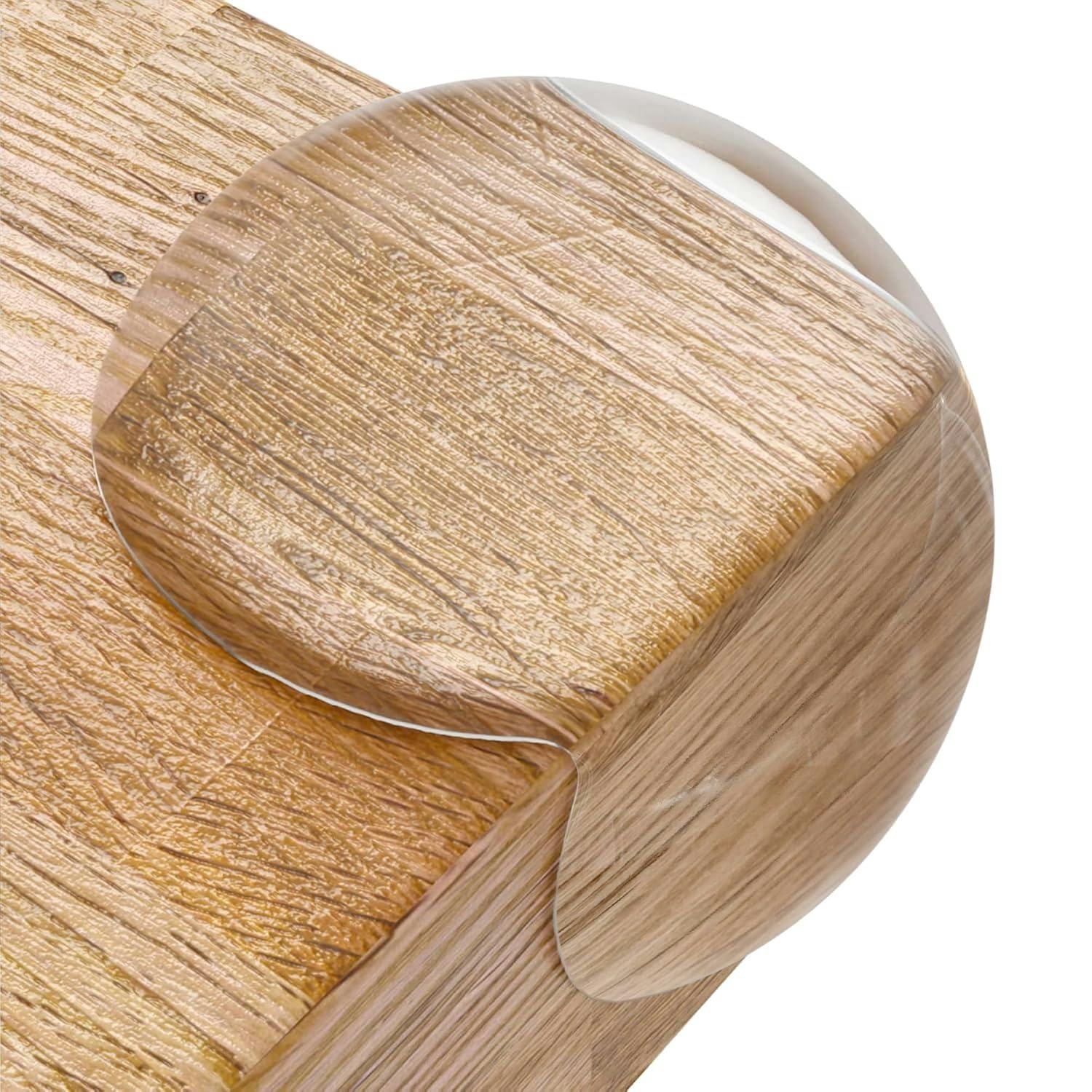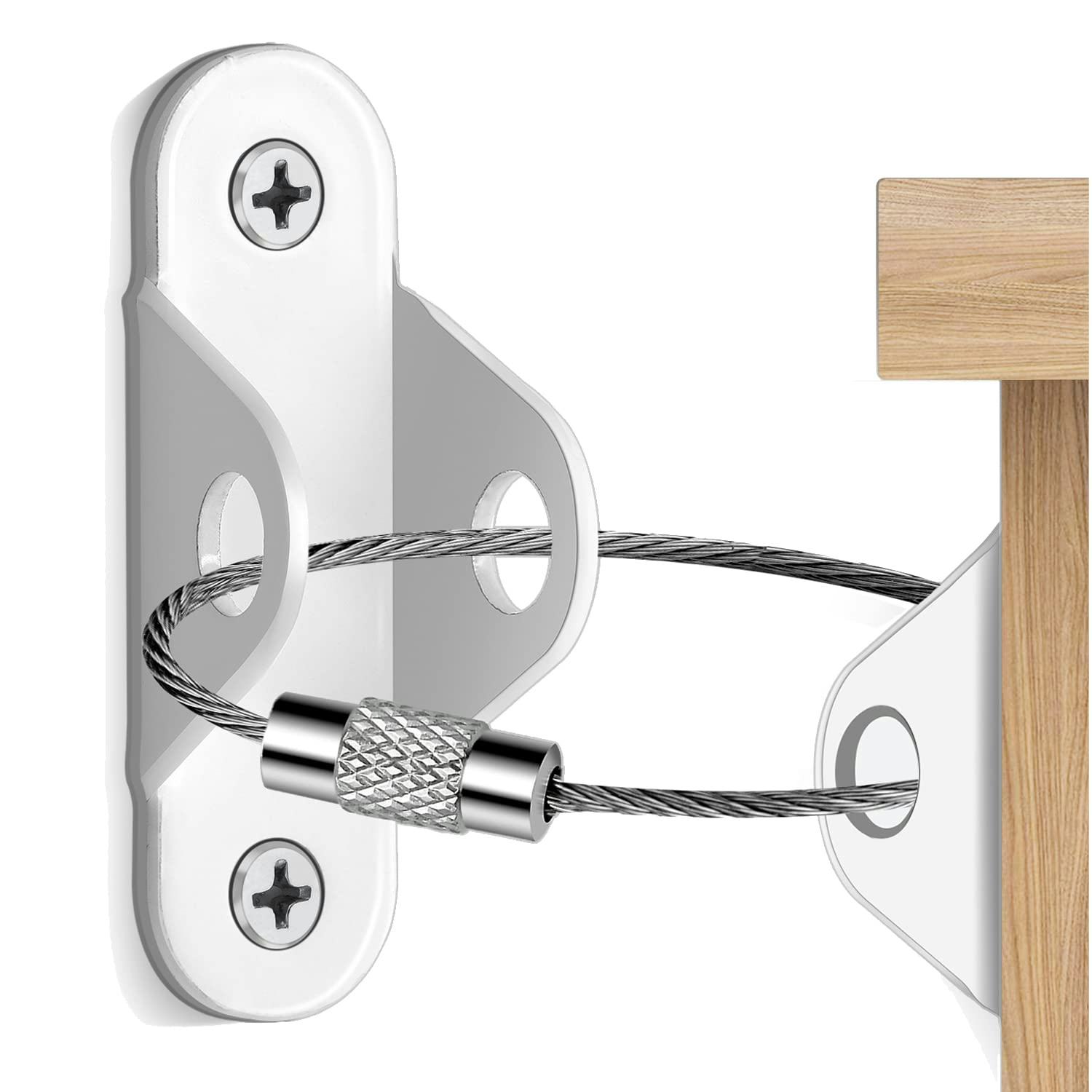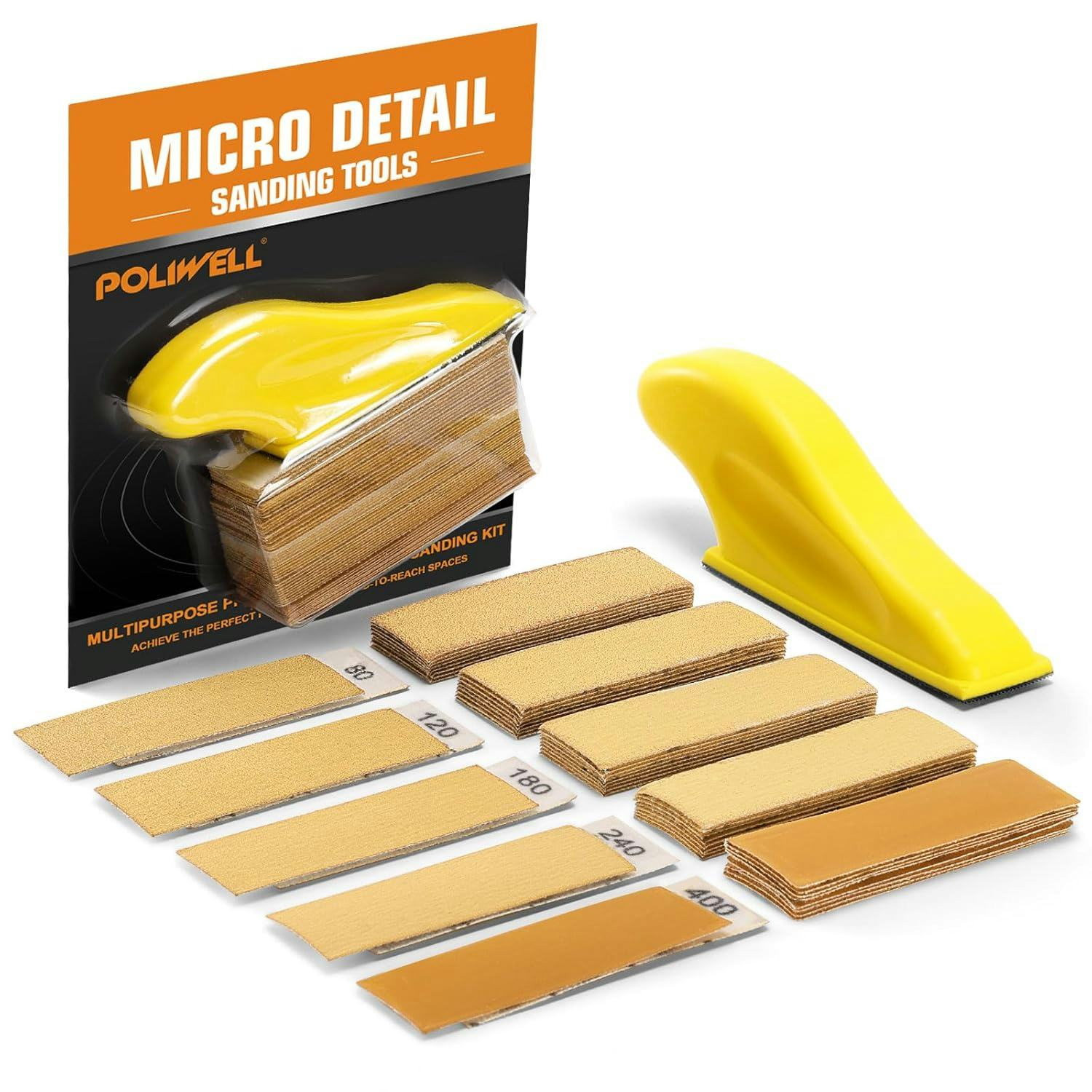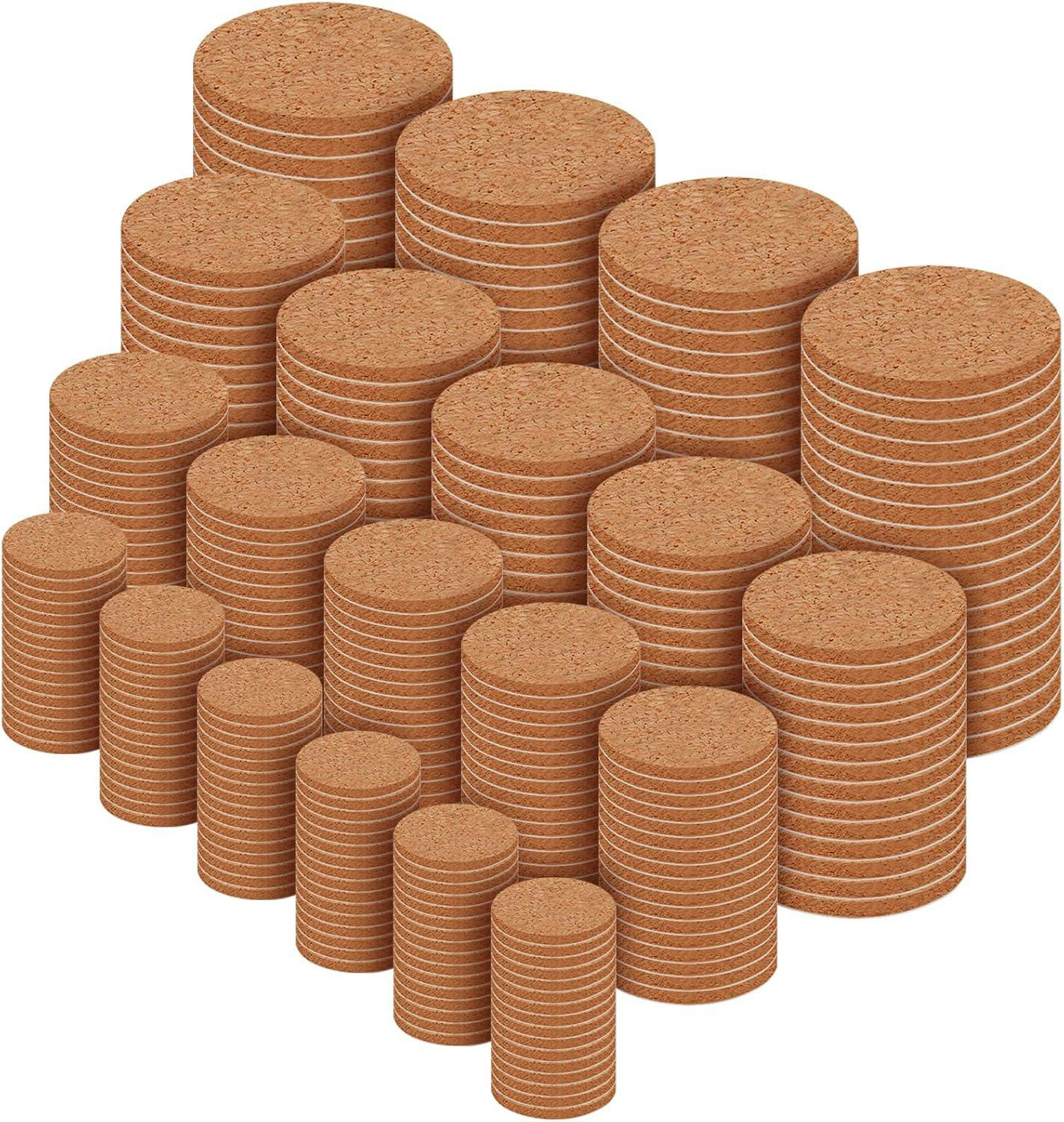
Calling a professional every time something in your house breaks can cost a pretty penny. So if you’re looking to save money on home repairs, you’ve come to the right place, as I spoke with a handful of professional contractors who were more than happy to share their cheapest, most genius ways to fix damage around your house.
Strict budget or not, with all the helpful advice from these contractors in your tool belt, you can easily fix those little issues around the house and keep your wallet intact.
Fix sticky doors using a block plane tool
Having to constantly struggle with a sticking door can be incredibly annoying. Danny Niemela, Vice President and CFO at ArDan Construction, a luxury home remodeling company, has an easy fix. He tells Inverse that a simple block plane tool “solves 90 percent of ‘stuck’ doors, and it is way faster than trying to fix the frame or rehanging the slab.”
This particular block plane tool is currently available for about the cost of lunch. Simply take the door off its hinges, use the block plane to shave a few millimeters off the point of contact where it sticks, then paint over the spot if raw wood is exposed. According to Niemela, “The entire job, start to finish, runs under 20 minutes and saves hours of future frustration.”
Refresh yellow grout using a tile paint pen
Even the cleanest showers can look dirty if your grout is discolored. The solution? “The move I recommend is a $15 grout renew pen,” ArDan Construction’s Danny Niemela tells Inverse. “And please skip the bleach or vinegar, which does more harm than good.”
Not only does this renew pen come with enough paint inside to cover up to 150 feet of grout, but the paint dries quickly, so you won’t be stuck waiting around to shower after application. The water-based formula is also completely nontoxic, and the narrow tip applicator makes it easy to “color” inside the lines.
Install flashing tape around your window trim
Preventing damage from happening in the first place is almost always cheaper than fixing it down the road — especially when it comes to the outside of your home. “Exterior protection starts with three cheap things most homeowners ignore: flashing tape, caulk, and hose bib covers,” says Danny Niemela of ArDan Construction. “Flashing tape ($20 a roll) used around window trim, deck ledger boards, and hose penetrations can prevent thousands in rot.”
With its advanced acrylic adhesive that delivers superior bonding as well as heat- and UV light-resistance, this roll of flashing tape is a solid pick that won’t break the bank. It works on a wide variety opf materials, and many reviewers raved about how sticky it is.
Fill gaps around trim & masonry joints with caulk
Water damage can be incredibly expensive to fix. Thankfully, Danny Niemela of ArDan Construction has a cheap suggestion on how to prevent it in the first place. He recommends using a “tube of paintable exterior caulk to fill gaps around trim or masonry joints where moisture gets in.”
This particular caulk is reinforced with silicone so it’s both strong and flexible, providing a waterproof seal that withstands all kinds of weather. It also has a white finish that can be painted over to match its surroundings.
Cover your outdoor faucets to help prevent damage
Harsh weather can leave your outdoor faucets cracked and damaged. Luckily, the solution is as easy as placing a cover overtop of them. “Foam faucet covers prevent cracked bibs and frozen lines during cold snaps,” explains Danny Niemela from ArDan Construction. “I use these all the time on spec builds — not just cold-weather projects.”
Regardless of whether you live in a hot or cold climate, these covers are made from weather-resistant EPS material that helps shield your faucets from freezing, corrosion, as well as rust. Installation is a total breeze using the drawstring mechanism in the back — and a rubber gasket running around the edge helps to further seal out moisture.
Hang thermal curtains to help insulate drafty windows

H.VERSAILTEX Primitive Linen Curtains 100% Blackout Curtain Drapes Burlap Curtains with White Thermal Insulated Liner, Grommet Top Drapes Living Room/Bedroom (2 Panels, 42 x 45 Inch, Natural)
Amazon -Got a drafty window that’s running up your energy bill? Consider hanging up some thermal curtains. According to Justin Cornforth, owner and CEO at Ace Home Co. where they provide electrical, plumbing, and HVAC services, “Insulated thermal curtains can create a barrier against window drafts, especially on older single-pane windows, and they work both for winter and summer.”
With more than 20 colors to choose from, you shouldn’t have any trouble finding these blackout curtains in a shade that suits your home. The extra-thick material helps insulate your windows against the weather outside — and the faux linen texture makes them look more expensive than they are. The grommets on the top are also resistant to rust.
Try an affordable insulation kit to help seal out drafts
If your windows let in the breeze even when they’re closed, consider opting for an insulation kit. Justin Cornforth from Ace Home Co. tells Inverse that “you can use insulation kits as a short-term fix, among them heat-shrink film ones can be quite effective. Plus, you can combine it with rope caulk for drafty sashes.”
Not only is this particular insulation kit available for a song, but it also comes with enough material for use on up to five windows. Installation is so easy that the only tools you’ll need are a pair of scissors and a hair dryer. And since it applies crystal-clear, there’s a good chance you’ll hardly notice it’s there.
Opt for a drain snake instead of chemical clog removers
When it comes to pesky — and potentially pricey to repair — clogged sinks, Justin Cornforth from Ace Home Co. says, “[Never] use chemical drain cleaners.” These drain snakes are a chemical-free method of extracting clogs, and are a total steal at less than the price of coffee for three of them. The barbs running down their shafts latch onto dirt, hair, and more, making it easy to remove all sorts of blockages. Plus, you can wash and reuse them multiple times.
Use a mesh drain catcher to prevent pipe damage
To help prevent costly pipe damage from clogs, Ace Home Co.’s Justin Cornforth suggests that you “add mesh strainers in sinks and tubs to catch hair, food, and debris (especially in homes with long drain runs or shallow traps).”
This particular strainer is almost guaranteed to cost you less than calling a professional to clear your pipes. It’s made from rust-resistant stainless steel — and when it’s too clogged to ignore, simply empty it out into the trash for a quick clean. Plus, the universal design makes it suitable for use with just about any sink drain.
Try a unique in-drain catcher to prevent clogs
This TubShroom is an alternate to traditional mesh strainers, with a tower-shaped design that allows water to pass through as it grabs onto hair, soap scum, or any other bits of debris that flow its way. Just swipe your finger around the base to give it a quick clean.
Insulate pipes with foam covers to help keep them from freezing
Accidentally letting your pipes freeze can result in hundreds of dollars’ worth of home repairs. The solution? “Insulate exposed pipes in crawlspaces, garages, and exterior walls with foam sleeves,” suggests Justin Cornforth from Ace Home Co. Or, if you don’t have foam sleeves, Cornforth also says that you can “[use] heat tape to prevent them from freezing.”
Not only are these foam covers great for helping insulate pipes, but they’ll even work to keep pipes from developing condensation during the summer. Each one is pre-slit so that they’re ready to be installed right out of the box — and the self-sealing edges make them easy to secure in place.
Use rubber weatherstripping to help insulate the attic
Your attic likely isn’t insulated as effectively as the rest of your home, which means hot or cold attic air can leak into the rest of the house. Thankfully, Ace Home Co.’s Justin Cornforth has an easy DIY suggestion. He tells Inverse, that “you can use closed-cell foam or rubber weatherstripping” to insulate door frames and attic hatches, as they’ll hold their shape once installed.
And while installing weatherstripping may sound difficult, fear not — this roll features an adhesive backing that lets you press it right into place the same way you would with a giant sticker. It’s tear-resistant as well as long-lasting, with a smooth finish on both sides for added durability. Plus, a pair of scissors is all you’ll need to trim it to length.
Opt for closed cell foam tape to insulate door frames & hatches
If rubber weatherstripping doesn’t suit the project you have in mind, consider taking a look at this roll of closed cell foam instead. It’s weatherproof, shock-absorbing, as well as able to help soundproof your home — and the adhesive backing makes installation a total breeze. One reviewer confirmed that it “really does a great job of insulating, and the adhesive holds up well.”
Repair torn window screens with fresh replacements
Rips in your window screens can lead to bugs — and more — getting into your home. According to Ace Home Co.’s Justin Cornforth, “[Replacing] the screen fabric is simple and the frame rarely needs replacing.”
This screen replacement kit comes with everything you need for an efficient and effective DIY repair. The large, 48-inch by 118-inch roll can handle many window sizes. There’s a hook included to rip out the old screen, and rollers and clips to press the new one into your current frame.
Address cracks in your driveway with pavement caulk
Repaving your driveway to seal up those cracks can cost thousands of dollars. So if you’re looking to make repairs while sticking to a budget, Peter Ellison, co-owner of North Seattle Handyman, tells Inverse that “there are caulking products that keep moisture out” that are super simple to use — such as this bottle of crack filler.
The ready-to-use formula doesn’t require any shaking or mixing; just squeeze it into the crack, level it off with a brush, then lightly mist it with a spray bottle or hose. And unlike some caulking products, this one is unlikely to shrink or crack over time.
Clean your gutters regularly
Clogged gutters can lead to your roof developing water damage. “Gutters are your home's unsung heroes,” says Kevin Vander Hyde, Vice President of Vander Hyde Services, a second-generation home services business. “Clean them twice yearly and ensure proper drainage away from the foundation.”
With that in mind, this wand is a solid pick for anyone looking to clean their gutters without needing to climb up a ladder. The telescopic handle extends out to 20 feet, while the curved tip makes it easy to clear away dirt, leaves, twigs, and more. But if that isn’t enough, you can even connect it to your hose so it sprays water from the tip, making it even easier to get rid of debris.
Ensure gutters are draining away from your home
Along with keeping gutters clean, it’s important to make sure they’re draining away from your home. And if they aren’t? Then these downspout extensions are worth their weight in gold. They can extend from 21 out to 60 inches, making it easy to direct the flow of water wherever you need — and installation is as simple as fixing them into place using a screwdriver. Choose from three colors: white, black, or brown.
Touch up dings in wood furniture with wood markers
You don’t have to pay hundreds of dollars for a professional to repair the scratches on that piece of wood furniture. “If you are concerned about wood furniture, touch-up markers or wax filler sticks can work wonders,” explains Jim Marino, home improvement expert and CEO at Pinnacle Home Improvements. “All you have to do is pick the right shade.”
This particular set of wood markers and wax filler sticks includes a shade for nearly any type of wood, including mahogany, cherry, walnut, oak, and more. Application is as easy as coloring in the lines, then blending the edges for a seamless finish — and each order includes a sharpener for the wax sticks.
Fill any chips in walls with spackle
Having visible drywall damage is one of the easiest ways to make any space feel crummy. Luckily, Jim Marino from Pinnacle Home Improvements shared his easy fix with us. “For walls, we usually suggest filling chips with spackle, smoothing it out, then using a little paint pen or mini roller to blend it in,” he tells Inverse. “Always wipe the area first so everything sticks effectively.”
With that in mind, this drywall repair putty is an absolute steal. Application is incredibly simple — just rub it into the hole, wipe away the excess, then paint over it once dry. And unlike some types of putty, this one features a heavyweight formula that’s easily manipulated if needed.
Polish spackle repairs with a paint pen
You don’t have to bust out an entire can of paint if you want to ensure any wall spackle repairs look seamless. Enter: these pens. The brush-tip applicators make it easy to dab paint wherever you need — and you can refill them as many times as you like. Their airtight chambers can keep the paint inside fresh for up to seven years.
Smooth out your spackling job with a mini roller
Give wall spackle repairs an ultra-smooth finish with this paint roller set. Each order includes one mini roller, six high-density roller covers, as well as two paint trays — all for less than the price of a sandwich. One reviewer wrote about how they were “amazed at how well they roll, and how beautifully they paint. It looks like I used a paint sprayer on all of my cabinet frames and doors and is incredibly easy to get a nice finish.”
Add weatherstripping to your doors & windows
Looking for easy ways to help insulate your windows? “Start with weatherstripping,” suggests Pinnacle Home Improvements’ Jim Marino. “It’s quick and one of the easier things you can do.”
With that in mind, this roll of window sealing tape is specifically designed to help seal against drafts and leaks. The translucent appearance makes it hardly noticeable — and it can even help insulate your home against sound as well as airflow. Upon removal, it won’t leave behind any sticky residues for you to clean up.
Add a sweep to your doors to help stop drafts
To prevent drafts from entering your home, Jim Marino of Pinnacle Home Improvements recommends that you “add a door sweep if air is sneaking in from underneath.”
It’s easy to tackle the issue by adding this stopper to any door bottom. The adhesive backing makes installation a total breeze. And with five finishes to choose from (transparent, white, black, brown, or gray), you shouldn’t have any trouble finding one that matches your door.
Opt for a soft door sweep to keep outside air out
If hardstyle stoppers don’t suit the doors in your home, consider opting for this soft option instead. It slides underneath your door, sealing up that gap to help insulate your home against noise, cold air, dust, and more. Plus, you can even customize the size in order to fit doors between 30 and 36 inches in width.
Install door stoppers where handles can hit the wall
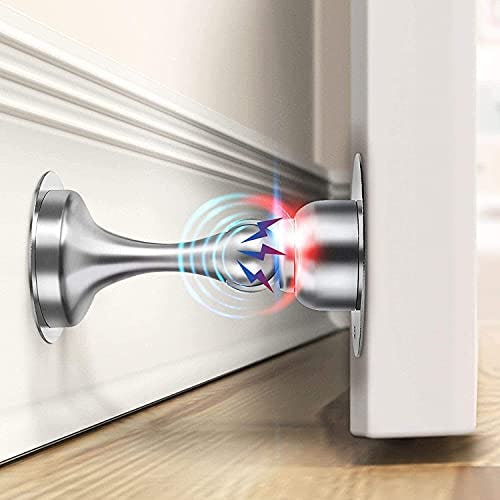
WINONLY Door Stopper, Magnetic Door Stop, Stainless Steel, Magnetic Door Catch, 3M Double-Sided Adhesive Tape, No Drilling, Screws for Stronger Mount, Hold Your Door Open, 1 Pack to Have a Try
Amazon -One of the easiest ways to wind up with dings in your walls is to have a door swing too wide. The solution? “Definitely use door stoppers to keep handles from punching holes in your walls,” says Jim Marino from Pinnacle Home Improvements. “Wall bumpers can help too.”
Not only can these stoppers help keep your walls safe from damage, but their magnetic design also means they’ll also hold your door open if you like. And if you aren’t confident in your DIY skills, each order includes screws as well as double-sided adhesive for tool-free installation. Choose from three finishes: black, silver, or white.
Apply wall bumpers to prevent damage from doors
Discreet, durable, and easy to install — these wall bumpers hit all the right notes. They’re made from tough silicone that absorbs shock, cushioning the blow if a door swings wide enough for the knob to come into contact with your wall. Plus, the adhesive backing lets you press them right into place wherever you like.
Protect walls (& kids) from sharp furniture
The pointed corners on coffee tables and nightstands can leave dings on your walls, or worse, potentially injure little ones. Jim Marino from Pinnacle Home Improvements has an easy fix. He tells inverse that, especially if you have kids at home, “corner protectors and furniture anchors are great for safety and keeping things intact.”
These particular protectors are a budget-friendly fix. They’re made from tough PVC, with a translucent appearance for an oh-so-subtle look. Plus, they stick just as well to wood as they do to metal, glass, or nearly any other material.
Prevent furniture damage by securing with anchors
Speaking of making sure your furniture is secure, these anchors are a clever way to help keep dressers, bookshelves, and more from tipping over and getting damaged. They’re so sturdy they can withstand earthquakes up to 5.5 in magnitude. And if you ever need to move your furniture around, there’s no need to unscrew anything — simply undo the babyproof latch and you’re ready to go.
Use an enzyme cleaner on your pipes (never harsh chemicals)
Not all liquid clog removers are created equal. Jim Marino from Pinnacle Home Improvements tells Inverse that “enzymatic cleaners will keep clogs at bay without harsh chemicals” — which is only part of the reason why this drain cleaner is a winner. The enzyme-enhanced formula works to break down grease, paper, fat, and more, helping clear your pipes without relying on harsh chemicals. And unlike some cleaners, this one is suitable for use with septic tanks.
Put water leak detectors near your sinks & washer
It doesn’t take much water leakage to create hundreds of dollars in damage. “We always recommend that you check your water heater once a year and put leak detectors near sinks or your washer,” explains Pinnacle Home Improvements’ Jim Marino. “A little checkup can go a long way.”
Not only do these water leak detectors buzz at the first drip, but they also come with batteries already installed, which means you can place them wherever you want right out of the box. Their small size also makes them easy to fit into awkward nooks and crannies.
Sand down doors that catch
Doors that don’t swing smoothly are a major pain. Jim Marino from Pinnacle Home Improvements has an easy fix. “To start with, check the hinges and tighten any loose screws,” he tells Inverse. “If the door is still catching, a little sanding on the edge might help.” And if that doesn’t do the trick? “Swelling from humidity is a common culprit behind this issue. So, run a humidifier and see if it makes a real difference.”
With that in mind, this micro sander kit is an affordable pick that requires hardly any DIY skills in order to use. Each order includes 50 sheets of sandpaper in in five different grit levels, making it great for heavy-duty jobs as well as small tweaks — and the included handle makes it easy to grip the sandpaper.
Run a humidifier to test why your doors are sticking
If your door only sticks sometimes, consider grabbing this humidifier to figure out if it’s because of excess moisture in the air. According to Pinnacle Home Improvements’ Jim Marino, “Swelling from humidity is a common culprit behind this issue. So, run a humidifier and see if it makes a real difference.”
This humidifier’s water tank is large enough to keep it running for up to 50 continuous hours. And since it runs at a super-quiet level, you won’t have to worry about it disturbing you when sleeping or working from home.
Apply cork cutouts to the bottoms of your furniture
Scratched floors can make even the nicest homes feel crummy. The solution? “A trick I’ve been using for years — especially in rental apartments — is to hot glue inexpensive cork cutouts to the bottoms of chairs and tables,” suggests Jacob Naig, a Des Moines based real estate investor, licensed agent, interior designer, and contractor. “It lasts longer than stick on felt, and doesn’t leave a residue.”
Not only can you grab this pack of 400 cork cutouts for the cost of lunch, but each order includes four different sizes of cutouts, making them easy to use with furniture legs both large and small.
Use hot glue to adhere cork or furniture pads
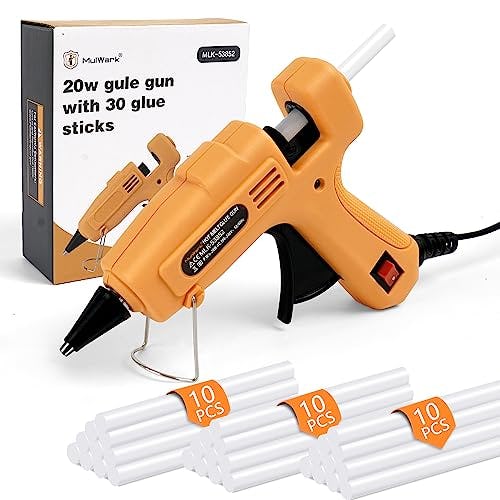
Mulwark Mini Hot Glue Gun and Sticks Set - High-Temp Glue Gun with 30 Glue Sticks - Perfect for DIY Crafts, Repairs, Home, Office & School Projects - 20W Premium Mini Hot Glue Gun
Amazon -Ensure your furniture pads stay secure for the long run by grabbing this glue gun and gluing them into place. The ergonomic handle allows it to fit comfortably in either hand – and each order includes 30 glue sticks to get you started. “Heats up fast, has a little red indicator light and a metal kickstand,” wrote one reviewer. “I like that feature because I hate having to lay it down on the side while working.”
Rotate your furniture to help keep floors looking good
You rotate your mattress once every few months, so why not do the same to your furniture? “Floors fade and dent unevenly under the weight of furniture,” explains Jacob Naig. “A small, nudge one way or the other can prevent long-term shadowing and scarring.”
The only catch is that some pieces of furniture can be heavy — which makes this furniture lifter set so handy. It comes with everything you’ll need to adjust pieces of furniture weighing up to 400 pounds, including a lifting lever as well as sliding discs. Many reviewers raved about how it’s “easy to use.”
Use rope caulk along drafty window & door frames
If you’ve noticed your HVAC working into overtime, it could be due to a drafty window. Thankfully, Jacob Naig has an affordable fix. “Rope caulk is a low-profile, renter-friendly solution that seals cracks around the sash and the frame, without changing the window permanently,” he tells Inverse. “It can spell the end of heating bills and the beginning of comfort in a hurry.”
This particular roll of rope caulk is designed to stick to wood, plastic, metal, masonry, glass, and more, making it suitable for just about any window. It creates a weatherproof seal simply by pressing it into place — no tools required — and removal is as easy as simply peeling it off.
Flush bacteria-boosting septic packets to keep your system working
It’s always cheaper to maintain something than it is to fix it — especially when it comes to your septic system. “In septic systems, the easiest maintenance [is to] flush bacteria-boosting packets monthly,” suggests Jacob Naig. “It prevents solids from breaking down and eliminates the expensive pump outs.”
With that in mind, these septic tank packets are filled with a powerful probiotic that’s formulated to help break down waste, making it less likely that you’ll wind up with a tank backup, overflow, or even a leaking odor. You only need to flush one packet per month for best results.
Inspect your roof with a telescoping mirror
A damaged roof can easily lead to even more damage inside of your home. “Give your roof’s valleys and gables an eyeballing each fall,” suggests Jacob Naig. “These are your roof’s most vulnerable areas to wind and rain.” Though if you’d rather not bust out a ladder to climb all the way up to your roof, “I suggest a telescoping inspection mirror,” Naig continues. “Or maybe a drone if you don’t feel like climbing a ladder.”
With a telescopic handle that can extend out to 52 inches, this inspection mirror is perfect for checking out your roof from the safety of a second-floor window. The head swivels 360 degrees so that you can easily see your roof from every angle. And since it’s made from stainless steel, it’s built to last.
Use clear nail polish to repair little screen tears
You don’t have to replace your entire window screen if it’s starting to fray or tear at the edges. Instead, try applying some clear nail polish. “Yes — clear nail polish,” says Jacob Naig. “For tiny holes or tears, work a bit of it into the edges to prevent fraying from worsening.”
At just a couple bucks, this base and top coat from Sally Hansen is almost definitely cheaper than purchasing an entirely new window screen. A few coats is likely all you’ll need in order to help keep your screen in good working order — and once you’ve finished, feel free to apply some to your nails, too.
Address yellowing & mildew with a steam cleaner
Can’t seem to get rid of that yellow stain? Not a problem, as Jacob Naig has a clever solution. “For bathrooms that have serious yellowing or mildew, I’m also not afraid to pull out my steam cleaners,” he tells Inverse. “They’re an awesome clean and chemical-free way to give your grout and tile a reset.”
This particular steam cleaner comes with a variety of interchangeable scrubber heads, making it easy to clean grout lines, sink tops, and everywhere in between. It only takes about three minutes to heat up — and the water tank is large enough to keep it running for up to 10 minutes.
Check for loose screws around your home

WORKPRO 12-in-1 Ratcheting Multi-Bit Screwdriver Set, Quick-load Mechanism Screwdriver with Double End Bits in Handle
Amazon -Older homes can be more susceptible to damage, especially if the hardware used during construction is beginning to come loose. “If your house dates to before 1990, you will need to go on a screw hunt,” says Jacob Naig. “Adjust anything that wiggles — door handles, towel bars, curtain rods. Small fixtures that come out and take part of drywall or trim out with them in the process are also some of the sneakier types of damage I observe.”
If you don’t have the tools to fix the little nuts and bolts around your home, it’s not a problem, as this screwdriver comes with 12 interchangeable bits in varying Philips and flathead sizes. The slip-resistant grip also helps you keep a firm handle as you twist. And since it ratchets, you won’t have to strain your wrist to twist it.
Fill stripped screw holes with toothpicks coated in wood glue
You don’t need to be a DIY expert in order to work with stripped screw holes. “For screw holes that have stripped out, insert toothpicks coated in wood glue, break them off flush, then reinsert the screw,” explains Jeri Goodkin Dausey, Certified General Contractor & Certified Building Inspector at Florida-based Violation Clinic. “This tightens up loose hinges without any fancy tools.”
This particular bottle of wood glue dries quickly, so you won’t be stuck waiting around in order to plug up that stripped hole. It also bonds stronger than wood — so there’s no need to worry about its ability to last over time. And if you happen to spill some of it, you can easily clean it up using nothing more than plain water.
Spray grime & mildew off of deck surfaces
Keeping your deck looking good doesn’t have to take a ton of work. “A gallon of Simple Green Oxy Solve Deck and Fence Cleaner goes a long way in cleaning mildew, dirt, and grime from wood surfaces,” says Jeri Goodkin Dausey from Violation Clinic. “Apply with a cheap pump sprayer and rinse — no pressure washer needed.” Unlike some types of outdoor cleansers, this one relies on peroxide rather than harsh chemicals to eliminate grime.
Use cleanser in a pump sprayer to effectively clean decks
Once you’ve got a good deck cleanser on hand, you can more effectively complete the job by grabbing this sprayer. It can hold up to a gallon of liquid, so you won’t be stuck having to constantly refill it as you spritz your deck — and the funnel-top design helps prevent liquid from splashing back at you when filling it up. Plus, the seals and gaskets are all bleach-resistant, so they should hold up for many years of cleaning.
Touch up outdoor fixtures with metallic spray paint
Sometimes a little makeover is all you need to make something look brand new. “Instead of replacing, use Rust-Oleum Universal Metallic Spray Paint to refresh outdoor light fixtures, house numbers, or even mailbox posts,” suggests Jeri Goodkin Dausey from Violation Clinic.
She goes on to recommend that you “choose an oil-rubbed bronze or matte black for a modern, high-end look at a fraction of the cost.” And if you’re worried about how it’ll fare when used on outdoor surfaces, it’s not a problem, as the oil-based formula delivers a long-lasting finish that helps prevent rust, and is chip- as well as fade-resistant.

